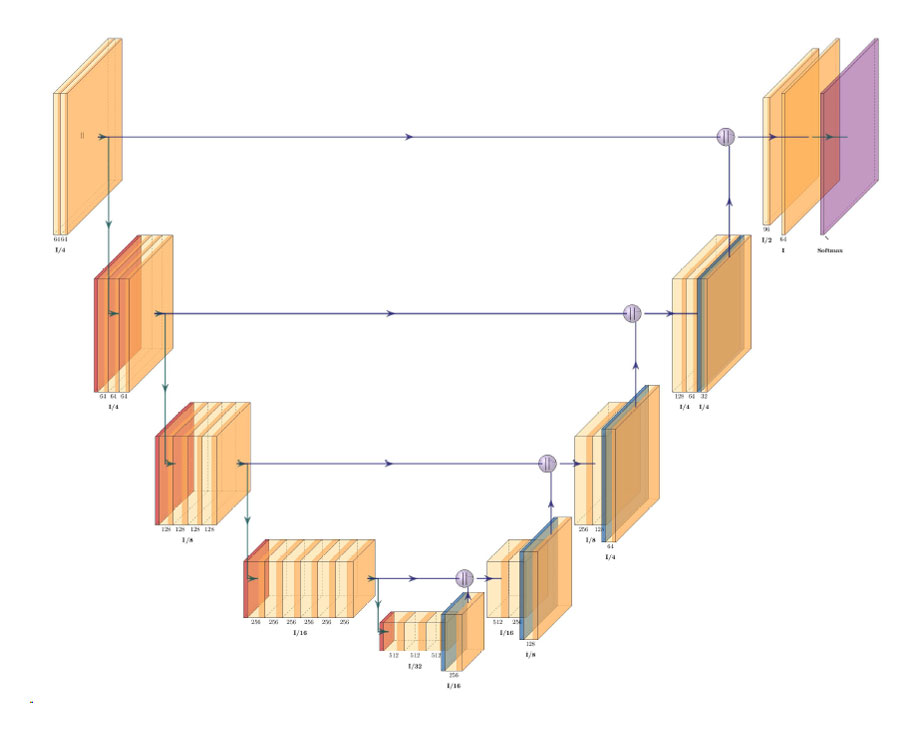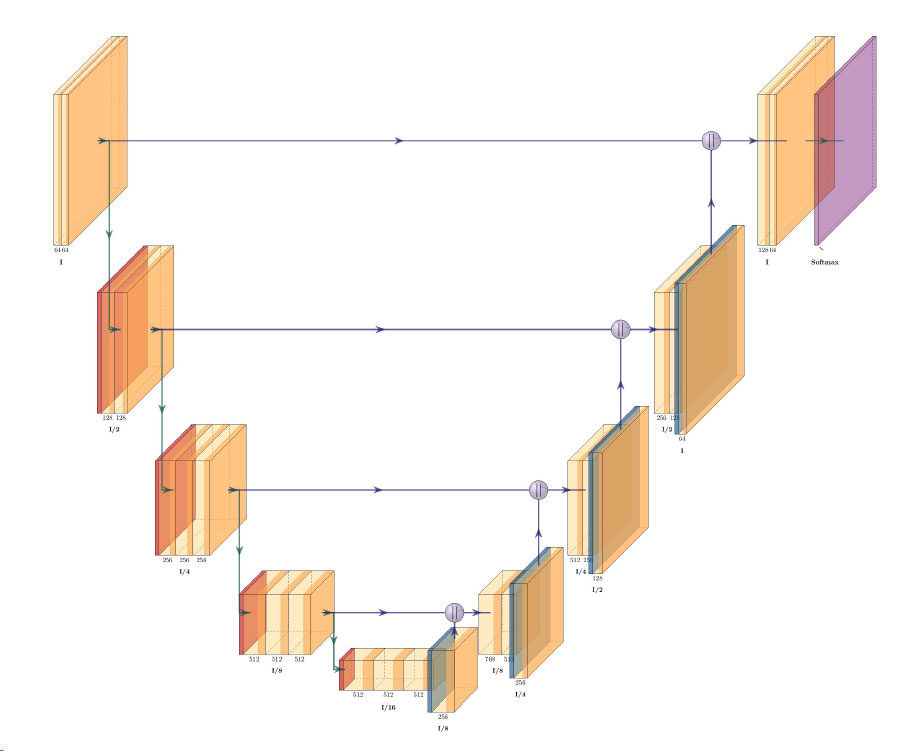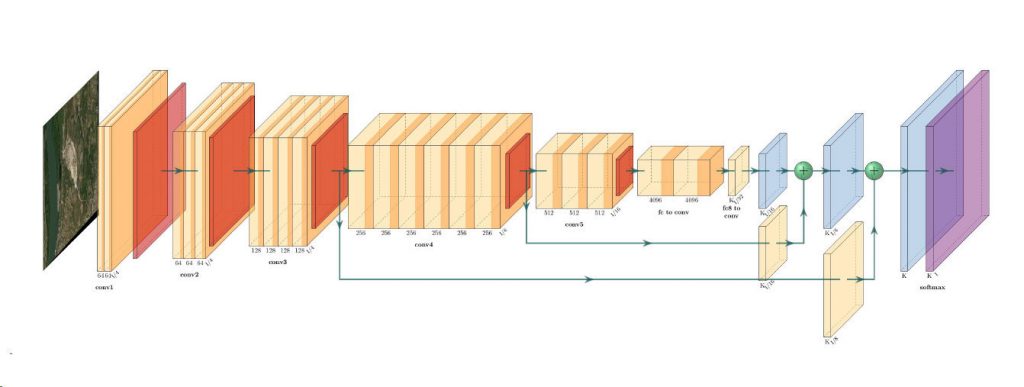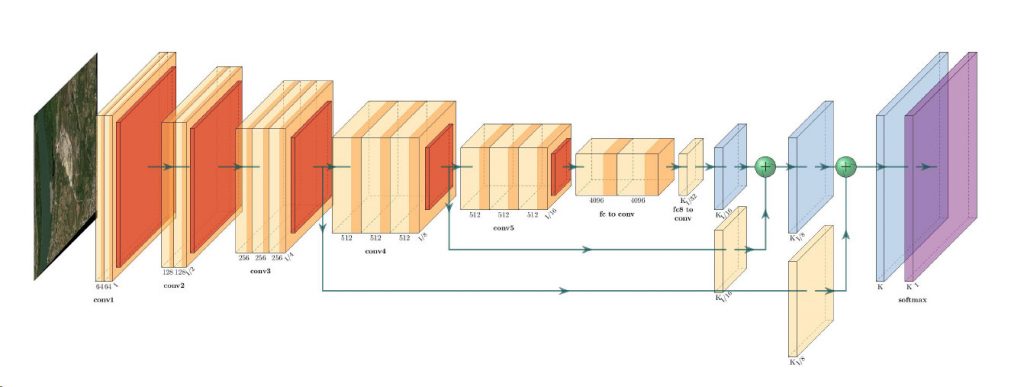What is SAR Imagery? Introduction to Synthetic Aperture Radar
- Zuzana Hajkova, Content Marketing Coordinator, EUSI
SAR imagery enables all-weather monitoring, penetrates dry soil, and offers resolution as high as 25 cm. Thanks to that, it’s invaluable for applications like emergency response, defence and intelligence, or agriculture. How does SAR work? What are its advantages and limitations? And what other data sources can you integrate it with? Read the article to learn more.
Table of Contents
What is Synthetic Aperture Radar (SAR)?
SAR (Synthetic Aperture Radar) is a type of satellite imagery using radar waves to map the Earth’s surface. The radar transmits electromagnetic waves, they reach the surface and backscatter back to the sensor. Based on the characteristics of the backscattered waves, it is possible to determine the type of the surface of an object and the distance between the sensor and the object.
Different types of backscattered waves
- Rough surface (for example vegetation): The backscattered waves go in various directions, resulting in a diffuse backscatter.
- Smooth surface (for example water or road): No or little amount of signal backscatters to the sensor.
- Human-made structures (for example buildings): the radar waves double bounce off the surface, resulting in a bright and clear backscatter.
- Objects with several surface layers (for example forest): due to multiple scattering within the object’s internal layers, a higher backscatter signal returns to the sensor, and the object appears bright in the satellite image.
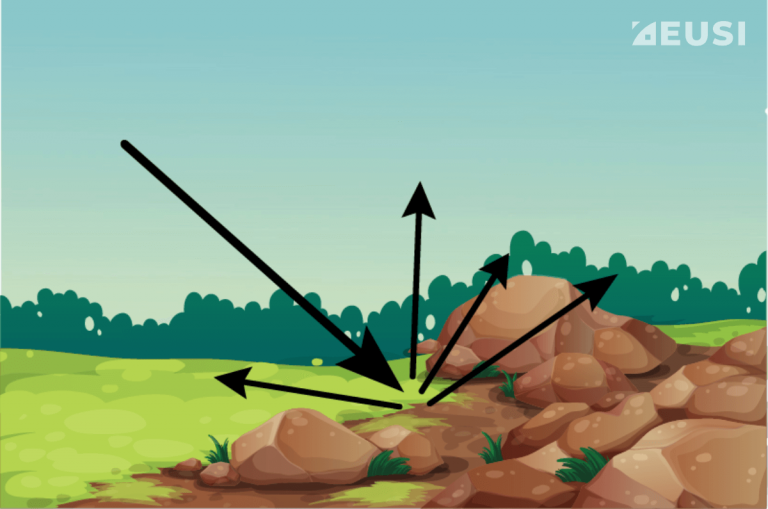
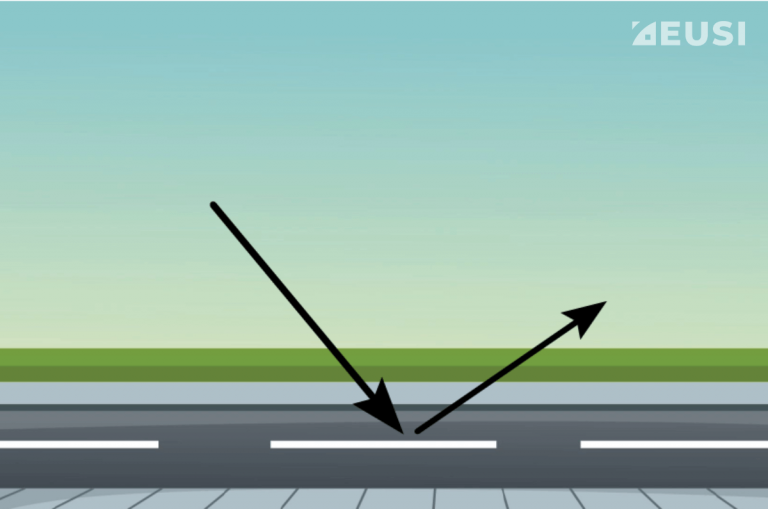
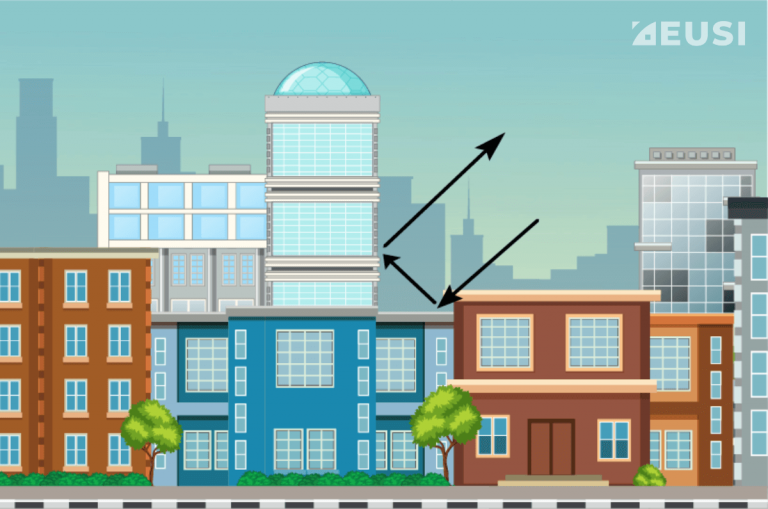
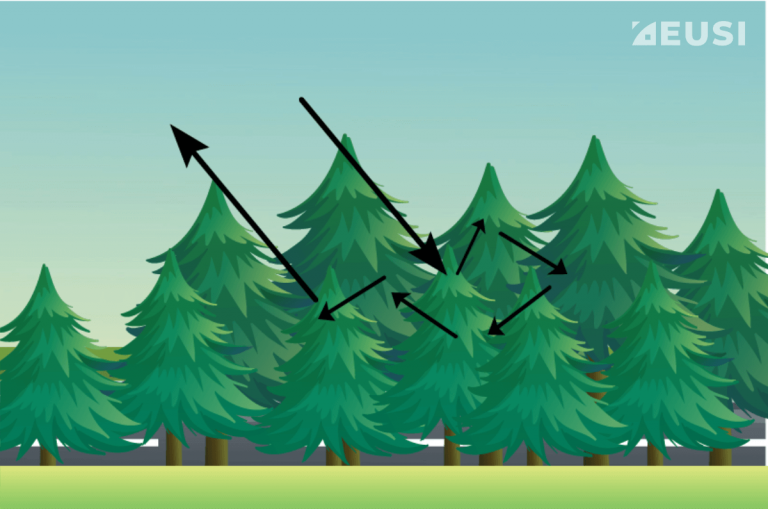
Wave orientation in SAR imagery
SAR transmits electromagnetic waves; the orientation of an electromagnetic wave is called polarisation. Every electromagnetic wave consists of electric and magnetic fields. Horizontal polarisation is denoted as H and vertical polarisation is denoted as V. There are four common polarisation combinations used in SAR sensors:
- HH: Sensor transmits a horizontal signal and receives a horizontal signal.
- VV: Sensor transmits a vertical signal and receives a vertical signal.
- HV: Sensor transmits a horizontal signal and receives a vertical signal.
- VH: Sensor transmits a vertical signal and receives a horizontal signal.
Vertical polarisation is used to detect elevated objects, such as buildings, rough sea or transmission towers. Horizontal polarisation is more suitable for flat and low surfaces – rivers, bridges, or for example power lines.
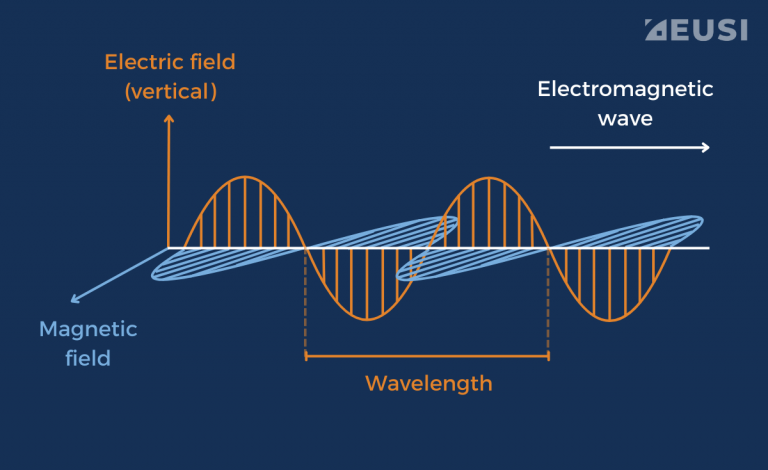
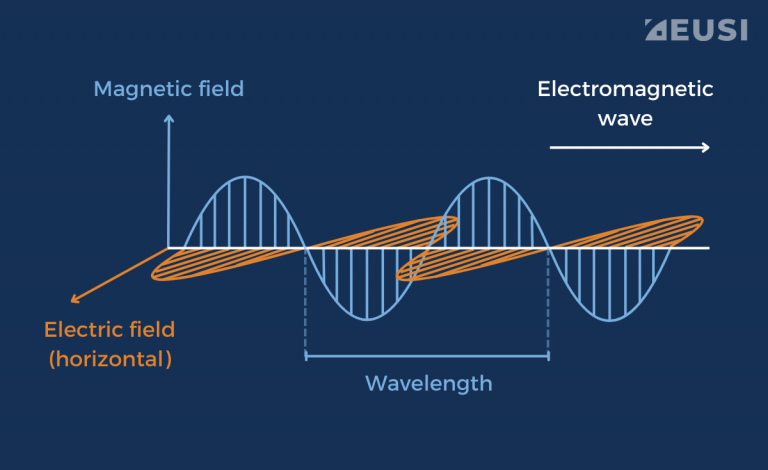
Advantages and limitations of SAR imagery
The major benefits of SAR imagery include all-weather imaging, day and night operation, high resolution, the ability to penetrate foliage and soil, high revisit rate, and no sun glint.
1. All-weather imaging
At any given time, 60% of Earth is cloudy, dark, or both. Therefore, optical satellites are unable to persistently image important areas of interest. In contrast, SAR can generate images through clouds, smoke, fog, and other atmospheric conditions that hinder the effectiveness of optical imagery. This makes SAR particularly valuable for critical applications where cloud cover is often present, such as emergency response in the case of floods, wildfires or tornadoes.
- To a certain degree, the impact of clouds can be mitigated by 8-band multispectral imagery. Read how optical satellites helped see through the smoke of the Mediterranean fires in 2023.
2. Day and night operation
SAR can acquire imagery day or night since it relies on its own microwave illumination rather than sunlight. This feature enhances its utility for continuous monitoring and surveillance, especially in applications like defence and security.
“Passive (optical) sensors detect natural energy sources. They are dependent on sunlight and good weather conditions. Active sensors, used in SAR imagery, provide their own source of energy, and then record the energy backscattered back at the sensor. That is why SAR can provide insights even in the dark.”
Benjamin Schumann, Earth Observation Support Specialist at EUSI
3. High resolution
Modern SAR systems can achieve high spatial resolutions, enabling the detection and identification of small objects and features on the Earth’s surface. For example, the resolution of 25 cm in SAR imagery enables the precise identification of:
- small structures like buildings, roads, and bridges
- vehicles such as cars or boats
- vegetation details such as individual trees, crops, forest boundaries, and field texture
- changes in terrain like slopes, ridges, and valleys
- infrastructure elements such as power lines, pipelines, and communication towers
- urban features including rooftops, parking lots, and streets
- indirectly also water bodies like rivers, lakes, and ponds
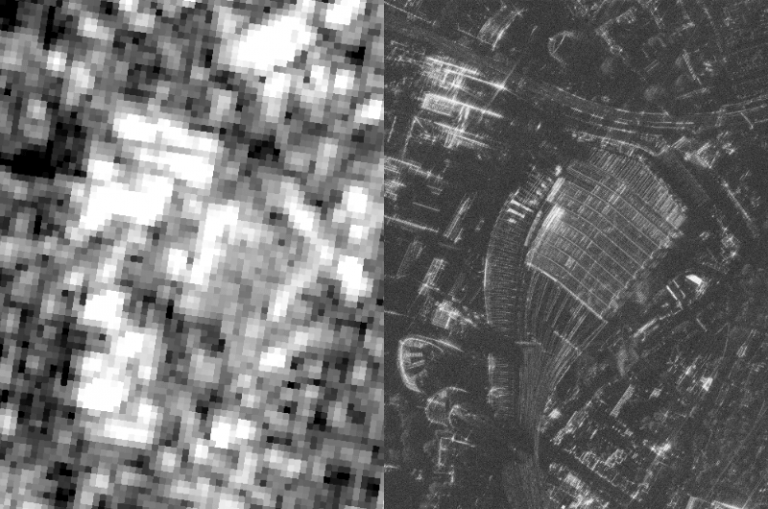
Comparison of SAR imagery from Sentinel-1 (10 m resolution) and Umbra (25 cm resolution).
4. Penetration of foliage and soil
When radar waves encounter foliage, they can penetrate through the canopy to some extent due to their longer wavelengths, allowing SAR systems to capture information about the underlying terrain or objects obscured by vegetation. This penetration ability enables SAR to “see through” vegetation cover and generate images that reveal features beneath the canopy, such as ground topography, structures, or changes in terrain.
Similarly, SAR can penetrate soil depending on the soil composition and moisture content. Dry soil tends to be more transparent to radar waves, allowing for deeper penetration and imaging of subsurface features. Moist or wet soil, on the other hand, can absorb more radar energy, limiting the depth of penetration. By analysing the radar signals reflected from different layers within the soil, SAR can provide valuable information about soil moisture content, subsurface structures, and geological characteristics.
5. High revisit rate
Just like optical satellites, SAR satellites can revisit the same area multiple times a day or week, providing a continuous stream of data for persistent surveillance and monitoring. This capability (called temporal resolution) is essential for detecting changes over time and tracking dynamic phenomena such as urban expansion or environmental degradation, as well as for military objects monitoring.
See a 50 cm image from Umbra (SAR imagery provider), showing the change after the fires in Lahaina, Hawaii, from October 2023 through March 2024:
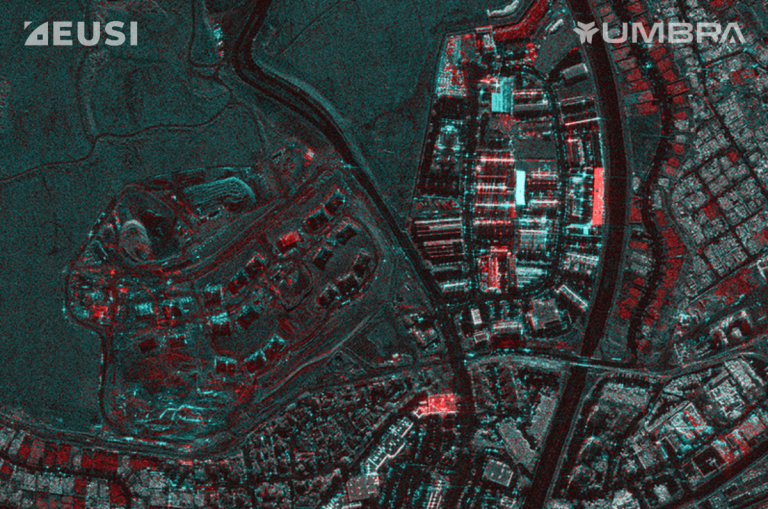
This image uses a two-colour multiview (2CMV) with the convention “blue new, red fled.” In this view, it is apparent where destroyed structures have been removed (red) and some new activity and construction has occurred (blue).
“However, these products require some inherent understanding of SAR,” warns Todd Master, the COO of Umbra. “Objects such as corrugated roofs can have extremely bright directional reflection that could be misunderstood as change when they show differently between two slightly different images.”
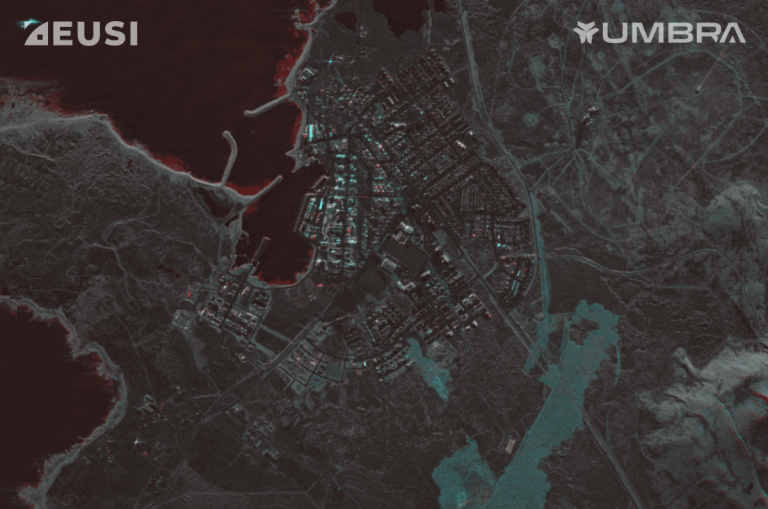
This 2CMV image of Grindavik, Iceland after the volcanic eruption in 2024 shows the location of the lava flows and departed ships. Blue is lava, red is ice melting.
6. No sun glint
In optical satellite and aerial imagery, sun glint appears when sun reflects off water, metal roofs or other surfaces at the satellite sensor. It can create bright streaks of light, which often makes it impossible to see the features underneath. In contrast, SAR is not affected by sun glint at all.
- In optical satellite imagery, sun glint can be avoided by Intelligent Collection Planning.
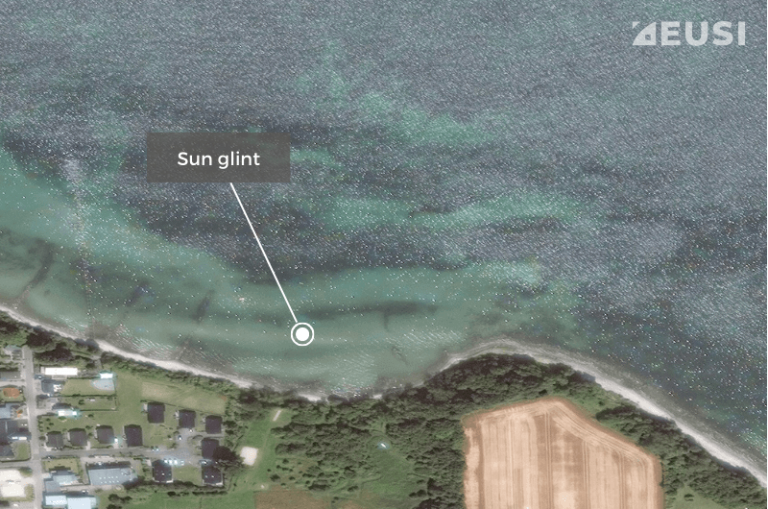
Optical image with sun glint
Unfortunately, SAR imagery has limitations as well. Those include complex interpretation, sensitivity to surface properties, limited penetration depth, the requirement of prior knowledge of the target, and colour information.
1. Complex interpretation
Due to its unique appearance and characteristics, the processing and interpretation of SAR imagery can be challenging. The images include noise called speckle, and complex interactions with surface features. Specialised expertise and software are usually required for accurate analysis and interpretation.
2. Sensitivity to surface properties
Variations in surface roughness, moisture content, and composition significantly influence the appearance of SAR imagery. In areas with heterogeneous terrain or diverse surface conditions, these factors can introduce challenges in image analysis.
3. Limited penetration depth
Despite its ability to penetrate clouds and vegetation, SAR signals have limited penetration depth into dense materials such as rock or concrete. In theory, SAR satellites can penetrate materials with no moisture content, however, that case is rather rare in nature.
4. Prior knowledge is required
SAR images don’t directly depict objects or scenes as they appear visually. Therefore, you need to know beforehand what you’re looking at. For example, you will be able to recognise that something is a human-made structure; however, without the knowledge of context, it can be challenging to recognise what kind of a human-made structure it is.
5. Colour
SAR imagery provides no colour information – it’s always in greyscale, making it not suitable for applications requiring detailed colour differentiation. Instead of colours, the information in SAR imagery is based on the amplitude and phase of the signal.
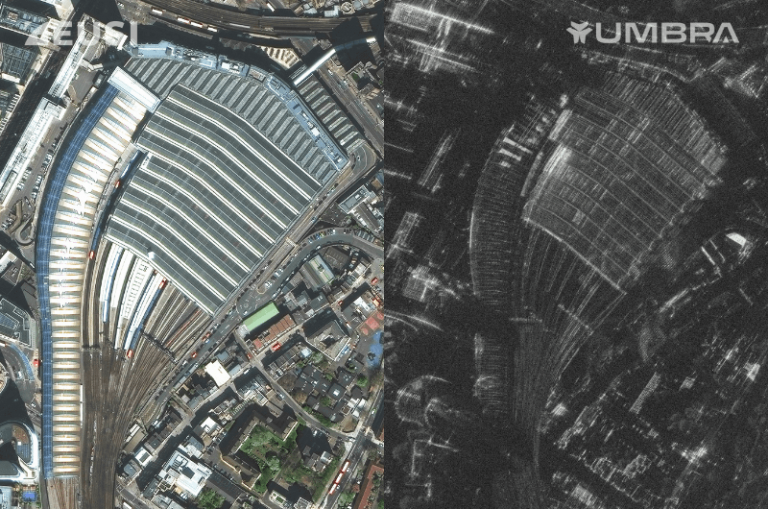
Comparison of optical and SAR imagery. Image credit: Maxar Technologies collected by European Space Imaging & Umbra provided by European Space Imaging
Applications of SAR imagery
Besides other uses, SAR imagery is a valuable tool for emergency response, defence and intelligence, agriculture, or for example urban planning. Let’s take a look at these applications in more detail:
Emergency Response
One of the most valuable uses of SAR images is emergency response. Natural disasters are often accompanied by poor weather conditions, which is why SAR is especially useful. It can penetrate the smoke of wildfires and volcanic eruptions, identify flooded areas even under cloud cover, find the location of a plane crash by detecting human-made objects, or identify oil spills in the ocean.
“With radar, we can detach from weather conditions and thus operate agilely and expand access to satellite imagery. This allows us to provide more satellite imagery to customers, for example emergency data on natural disasters,” confirms Nicole Enghuber, the Earth Observation Support Specialist at EUSI.
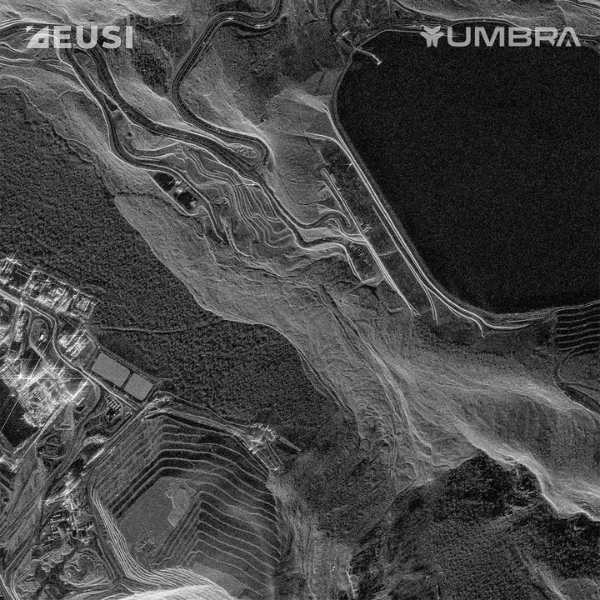
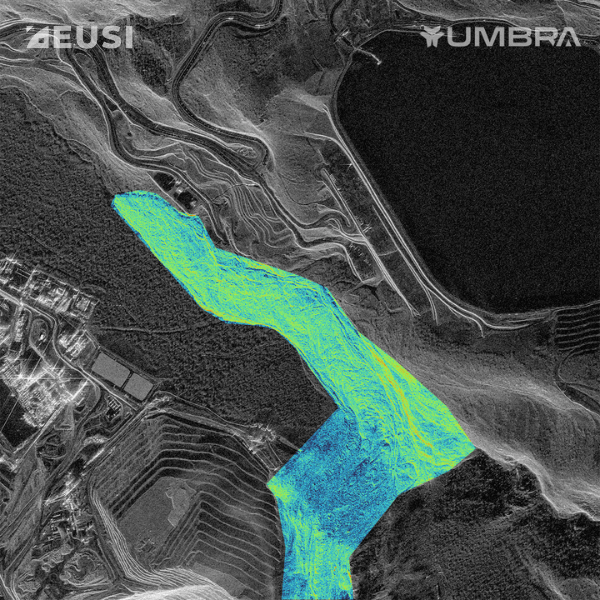
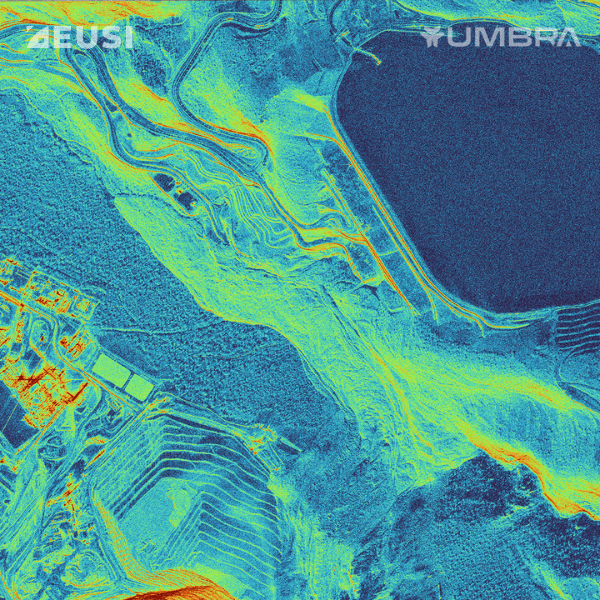
Defence and Intelligence
In defence and intelligence, SAR can be used for persistent monitoring of military objects and activities, such as airports, harbours, or the movement of vehicles. Thanks to its ability to detect vessels at sea, it provides surveillance capabilities for maritime security and border monitoring. Synthetic Aperture Radar can also aid defence and intelligence organisations in mission planning, threat assessment, or decision-making processes.
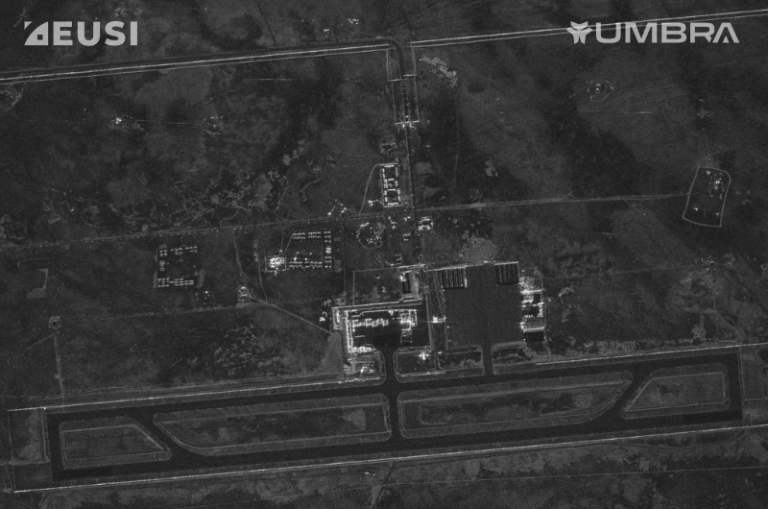
An airstrip in Libya captured in SAR imagery by Umbra
Agriculture
SAR imagery can help monitor agricultural activities by classifying different vegetation types, revealing information about soil moisture, or detecting differences in surface roughness related to field ploughing, soil tillage, and crop harvesting. This data can help farmers create agricultural maps and do seasonal monitoring, crop type mapping, resource utilisation, and yield estimates and predictions.
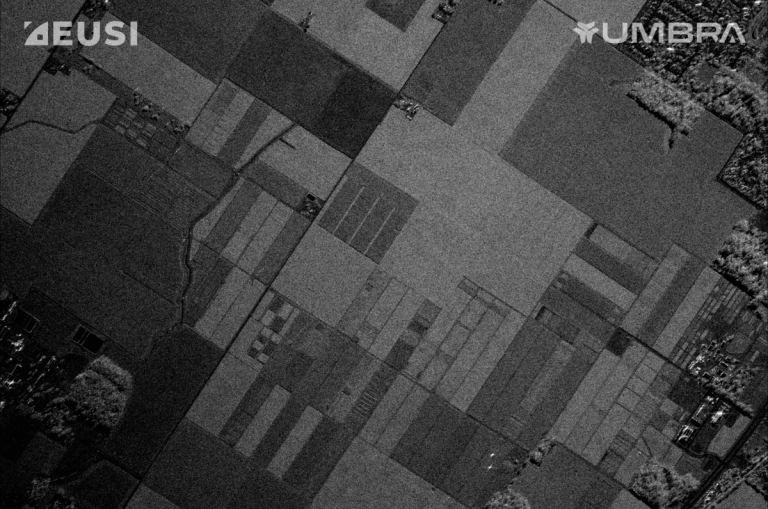
Farm in Indiana, USA captured in SAR imagery by Umbra
Other applications
Some applications utilise the combination of SAR and optical imagery, for instance Tipping and Cueing. That is a process used to detect vessels at the sea; first, the area is imaged by a SAR sensor to identify the location of a vessel – then, the location is imaged by VHR optical imagery to provide necessary details.
Other applications include urban planning and architecture, volcanology, or pollution tracking.
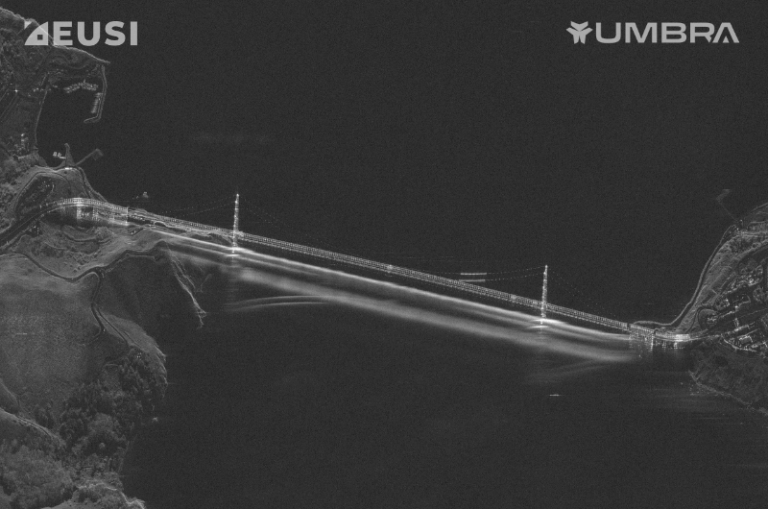
San Francisco, USA captured in SAR imagery by Umbra
Key SAR parameters
When working with Synthetic Aperture Radar imagery, you will likely come across these terms:
Target Azimuth Angle
Azimuth is the flight direction of a SAR collection. Target azimuth angle is the angle between the target, the north, and the direction of the satellite. It’s one of the essential pieces of information you need to determine the location of a target in SAR imagery: together with distance and elevation angle, it helps in accurately pinpointing the position of targets within the image. Moreover, variations in azimuth angles can impact the backscatter response of targets, affecting the brightness and clarity of features in SAR images.
Grazing angle
The grazing angle is the angle between the surface and the satellite. It determines how steep or shallow the collection is. Generally, a higher grazing angle provides more image contrast but reduces the amount of access to the AOI. Opposite to the grazing angle is the off nadir angle (ONA) – you can easily calculate the grazing angle as 90° minus ONA.
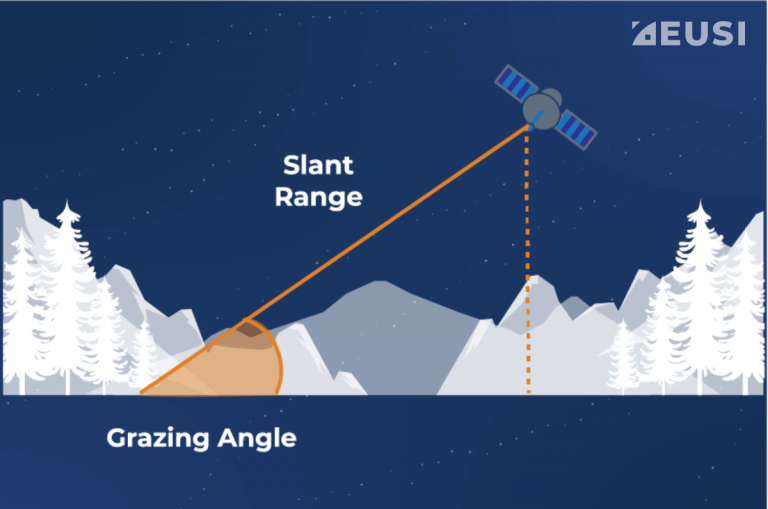
Slant range
The slant range refers to the distance between the radar antenna and a point on the Earth’s surface along the line of sight. It is a crucial concept in SAR imaging because it influences the geometry of the radar signal interaction with the terrain; as the radar beam travels obliquely to the ground, objects at different slant ranges will appear displaced in the resulting image due to geometric distortions like layover, where tall objects lean towards the radar, affecting their representation in the image. A lower slant range means that the radar beam is closer to the ground, which results in a more direct and perpendicular interaction with the terrain.
In Synthetic Aperture Radar imagery, the ideal slant range depends on your goal. For example, in the case of vessel detection:
- Shorter slant range means a high grazing angle and a low off nadir angle. The sensor will receive a diffuse backscatter from waves, and a clear backscatter from the vessel.
- Longer slant range means a low grazing angle and a high off nadir angle. The sensor will receive no or low backscatter from water, and a clear backscatter from the vessel. This will create a bigger contrast, and is therefore more suitable.
Looks
Looks in SAR imagery refer to the number of radar pulses transmitted and received during the imaging process. Each pulse sent out by the radar system is known as a look, and multiple looks are used to gather data from different angles and positions as the radar sensor moves along its orbit. The number of looks influences the resolution and quality of the final SAR image. While single looks often come with speckle, combining data from multiple looks can increase the resolution and detail captured in the imagery.
Band
Bands represent specific ranges of frequencies and wavelengths at which the radar system operates. Different bands offer varying capabilities in terms of resolution, penetration depth, and sensitivity to different surface features. For example, the X-band typically has wavelengths around 3 cm, while the L-band has wavelengths around 23 cm.
X-Band
X-Band is a specific band of wavelengths which operates at frequencies between 8 and 12 GHz with corresponding wavelengths ranging from 3.8 to 2.4 cm. SAR systems utilising the X-Band are known for their high resolution capabilities, suitable for military as well as civil remote sensing applications.
- Our partner Umbra operates at 3 cm X-bands, which allows for a sub-meter resolution of the resulting images.
L-Band
L-band operates at higher frequencies. It better penetrates through vegetation and is less affected by atmospheric disturbances, thanks to which it’s especially useful for topography mapping and land cover monitoring.
Bistatic capability
In a bistatic setup, SAR satellites fly in tandem pairs in precise formation. One satellite emits the signal while another satellite measures the backscattered energy. This allows for capturing radar signals from different angles, providing more detailed information about the shape and characteristics of objects on the ground. Bistatic capability is valuable for applications like deriving 3D models or identifying the direction and speed of moving objects.
Integration with other data sources
To overcome the limitations of SAR imagery, analysts can gain additional insights by combining SAR with other data sources, such as optical imagery, ground truth data, or GIS layers.
Combining SAR and optical imagery
While SAR images can see through clouds and provide valuable information about the surface characteristics, optical imagery brings clearer details and colours. However, this doesn’t mean you have to choose between SAR and optical imagery. It’s not one or the other – they are perfectly complementary and the combination of both will provide you with the unique possibility to monitor areas of your interested under all conditions and with the highest amount of detail available.
The most recent product available is DoubleShot – synchronised collections of 30 cm VHR optical imagery and 25 cm SAR imagery. How does it work? The collection team at EUSI analyses the orbits of Umbra (SAR) and Maxar (optical) constellations and matches collection times so that you receive both optical and SAR imagery collected over your target area only a few minutes apart.
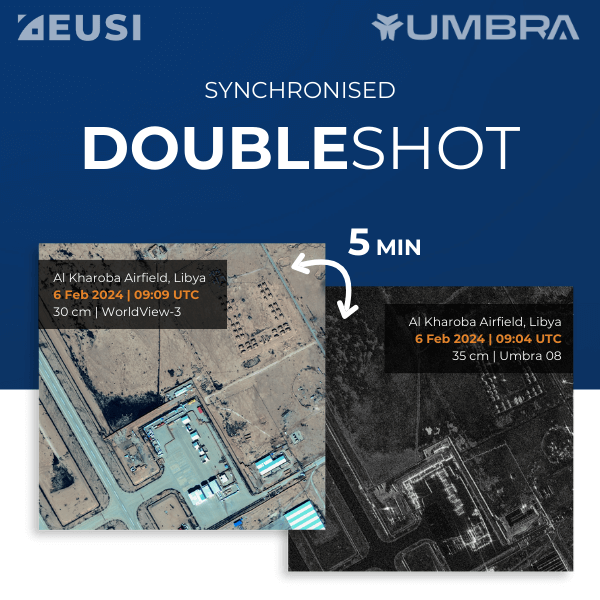
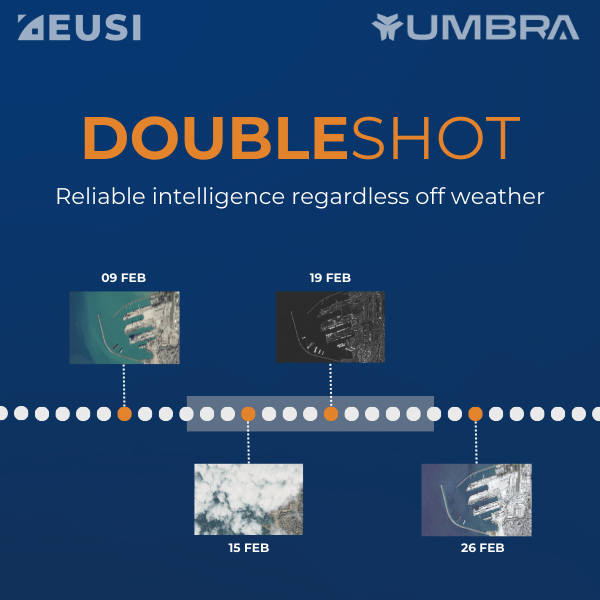
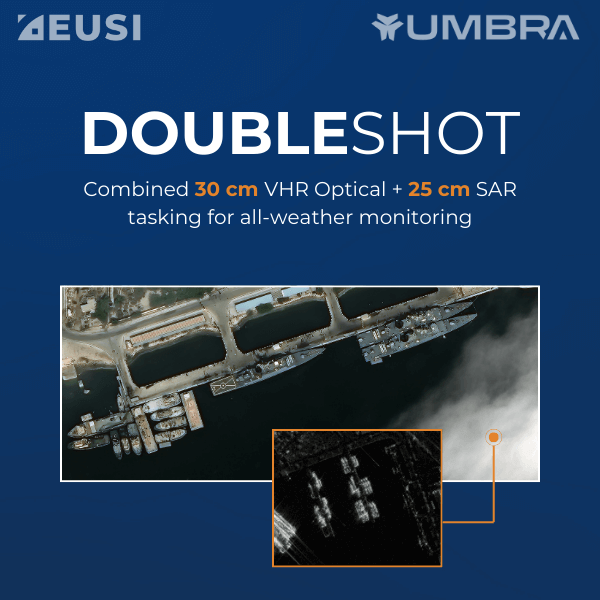
GIS layers
GIS layers are digital representations of geographic features used in Geographic Information Systems (GIS) for spatial analysis. When integrated with SAR, GIS layers provide contextual information such as land cover types, infrastructure, and boundaries, making the interpretation and analysis of radar data easier and more accurate.
SAR imagery provider: Umbra
The demand for satellite imagery in Europe is constantly growing. That’s why we decided to add SAR imagery into our offering, and we chose Umbra as our partner. Why Umbra?
Highest resolution on the market
Umbra offers the highest resolution on the market. When ordering imagery, you can choose between 25 cm, 35 cm, 50 cm and 1 m resolution.
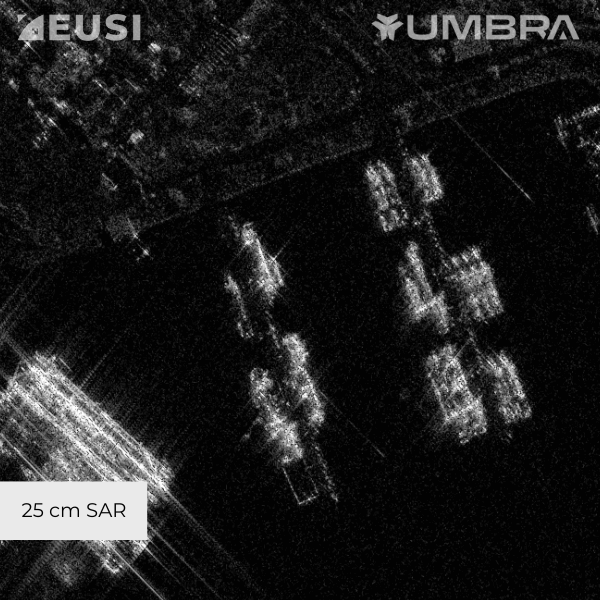
25 cm SAR image from Umbra
Easy licensing
Umbra provides its imagery with the Creative Commons license, which is completely unprecedented in remote sensing. You can use Umbra’s SAR images however you want, even resell them; under the condition you don’t provide them to countries under embargo.
Lowest price
Umbra has simple, straight-forward pricing, as well as the lowest price on the market. (That’s possible thanks to Umbra’s technological advantage – they have smaller and more powerful satellites than other providers.) With the simple pricing, you can directly see if the price meets your budget and accommodates your mission’s needs.
Highest bandwidth
Umbra offers the highest bandwidth – 1200 MHz, which is more than twice more than other SAR providers. Thanks to that, the ground sampling distance (spatial resolution) can be high.
How to get access to SAR or DoubleShot?
You can order SAR imagery or synchronised collections of SAR and optical images through EUSI. Just write us an email to info@euspaceimaging.com, and specify the details of your project.
- What is the goal of your mission?
- What is your area of interest?
- What resolution do you need?
We will be happy to get back to you.
Related Stories
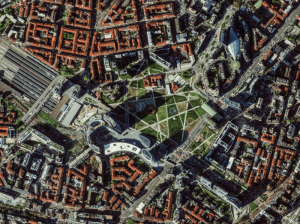
Europe’s Green and Digital Transformations with 25 Years of VHR Satellite Archive Data
Planning Europe’s future without knowing its past is impossible. The European Green Deal, Horizon Europe, the EU Biodiversity Strategy for 2030 and other policies all demand one thing: evidence. Not just today’s data, but years of history that show how our cities, forests, and coastlines have changed.
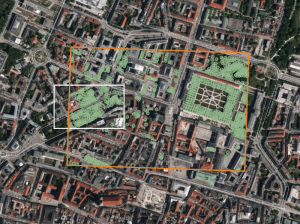
AI Uses 15 cm Satellite Images to Cut Costs and Increase Scalability in Forest Management and Urban Forestry
Forest managers across Europe face an impossible task: monitor millions of hectares with shrinking budgets while meeting increasingly strict EU environmental targets. But with the rise of AI and satellite technology, they now have new solutions at their disposal – smarter, cheaper, and more scalable – to monitor forest health, automate tree inventories, and plan sustainable logging. In this article, we introduce one of these solutions: an AI forestry algorithm developed by Arboair using 15 cm satellite data from EUSI.

GEOSeries: Extracting Insights From High Resolution SAR Imagery for Time-Sensitive Analysis
In this webinar, industry experts and advanced users of Umbra SAR data showcase how they transform SAR imagery into actionable insights in real-world mapping, monitoring and intelligence applications. See how NV5 and Umbra leverage ENVI SAR Essentials for advanced processing with time-efficient results, converting analytics into valuable intelligence.
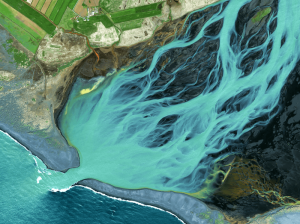
Using Satellite Imagery to Build Water Resilience Across Europe
Water across Europe is facing severe pressure. Climate change, urbanisation, agricultural demands and other sources of pollution are threatening water security and creating critical challenges that need to be addressed. We have to act quickly, build stronger systems and create sustainable water resilience practices – so that both natural ecosystems and human communities can thrive. Here is how satellite imagery from EUSI can help.


